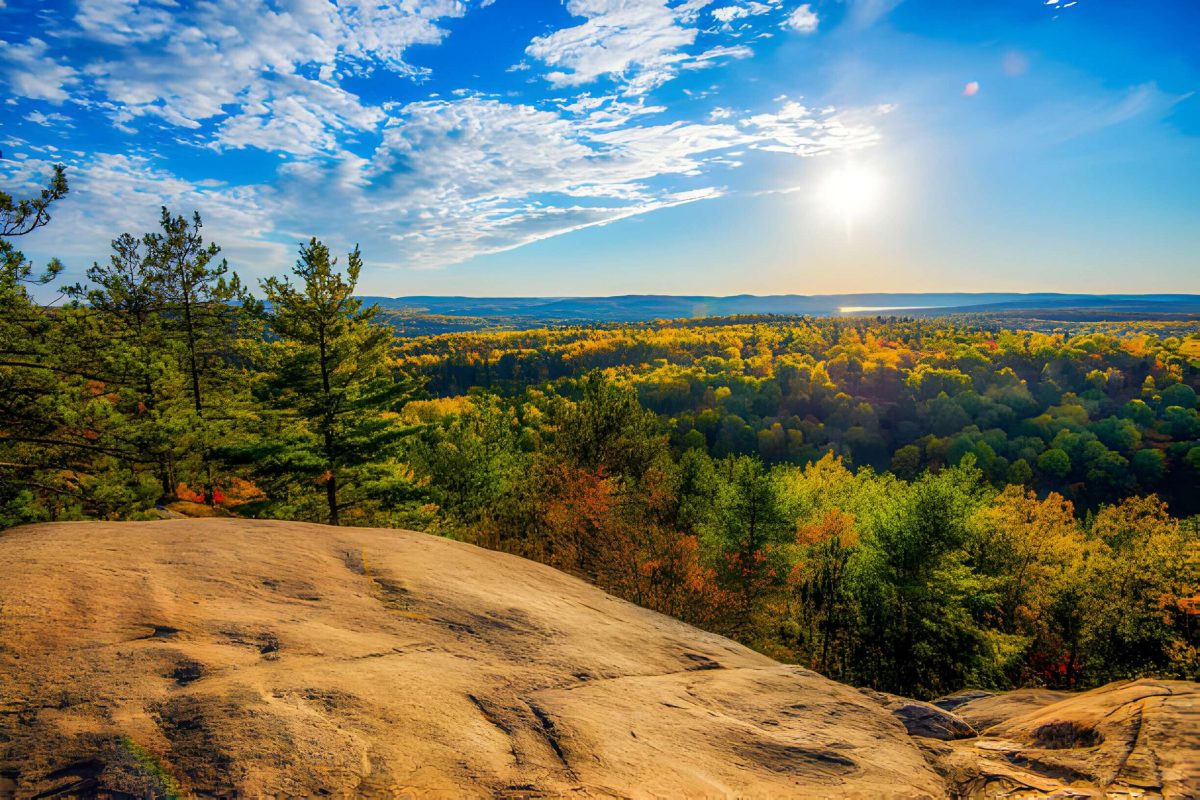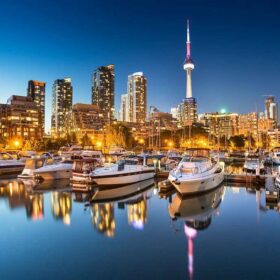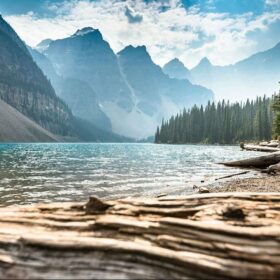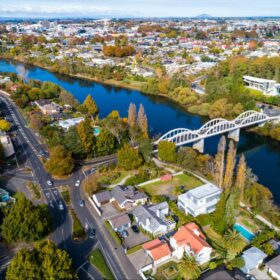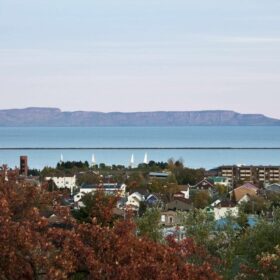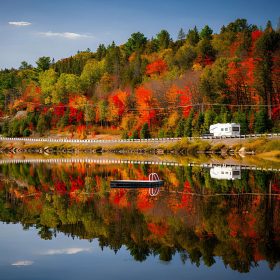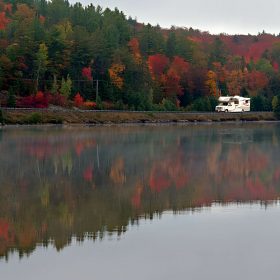Ontario boasts an extraordinary landscape featuring pristine lakes, rivers, and forests, much of which is easily accessible through the provincial and national parks scattered across the province.
During the summer, families frequently enjoy front-country campgrounds, particularly those situated on popular lakes with beaches. Ontario parks are home to many of the best campgrounds in Ontario, catering to various preferences for family trips or nature getaways.
These parks are also home to some of Ontario’s best beaches, with long stretches of sand gracing the shores of the Great Lakes and smaller bodies of water.
Hikers and canoeists can revel in the diverse trails and waterways cutting through breathtaking scenery, some conveniently located within a short drive from the main cities of Southern Ontario.
For those seeking remote wilderness adventures in the backcountry, venturing further afield to the regions north and west of Lake Superior in Northwestern Ontario is recommended.
To make park reservations and stay informed about current events, you can visit the websites of Ontario Provincial Parks or the National Parks of Canada.
Discover the park that aligns with your interests with our curated list of the best parks in Ontario.
1. Algonquin Provincial Park
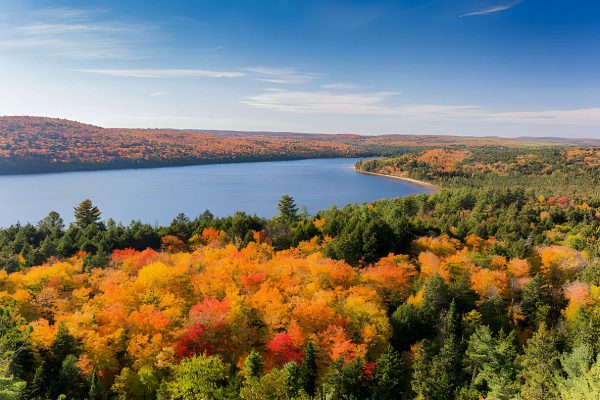
Located just three hours north of Toronto, Algonquin Provincial Park provides convenient access to Ontario’s breathtaking wilderness and stands as the province’s most popular park. The lakes and forests, inhabited by black bears, wolves, moose, and deer, offer abundant opportunities for outdoor adventures.
In the summer, camping is a favored activity, especially for families, and reservations for campgrounds in Algonquin fill up quickly. Many of the top campgrounds are strategically positioned around lakes.
Hiking trails in Algonquin provide an excellent and accessible means to explore the park, offering unique chances to encounter wildlife. Numerous trails lead to elevated ridges with views over the forest and lakes, and along the way, you might come across waterfalls, streams, bogs, beaver houses, ponds, and ancient trees.
Canoeing is a major attraction in Algonquin, with a network of lakes and waterways connected by well-maintained portages and supported by backcountry campsites. This makes Algonquin one of Southern Ontario’s premier destinations for canoeing and kayaking, with over 1,600 kilometers of marked rivers and lakes for paddlers.
The park is particularly beloved in autumn, drawing visitors eager to witness the vibrant display of red, orange, and yellow leaves. Another highlight is the Thursday night wolf howl, held exclusively in August, allowing visitors to call to wolves and listen to their haunting howls.
Situated at Km 20 near the main campgrounds in the park, the Algonquin Art Centre is a must-visit for those interested in nature and Canadian art. Housed in a beautifully restored stone building, the center provides the latest information on trails and campgrounds.
For accommodations near the park, the town of Huntsville serves as an excellent base. For a resort experience, consider the lakeside luxury Deerhurst Resort or the more mid-range Hidden Valley Resort, Ascend Hotel Collection. Both are located on the eastern edge of Huntsville, providing convenient access to the park.
2. Bon Echo Provincial Park
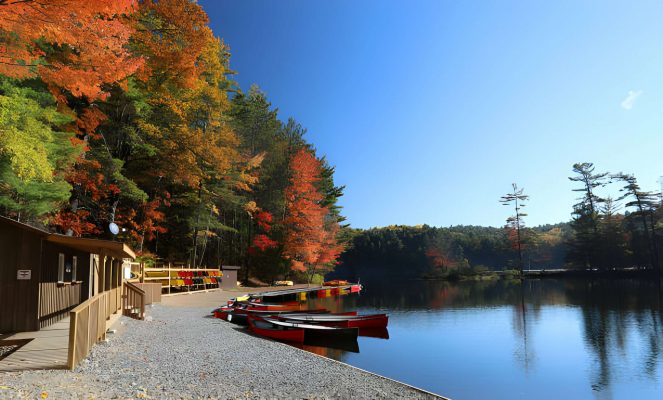
Bon Echo Provincial Park is a well-liked destination featuring a sizable campground, sandy beach, and a breathtaking backdrop, making it a summer favorite among families and groups. The primary campground situated on Mazinaw Lake offers panoramic views of the 100-meter-high cliffs of Mazinaw Rock, the park’s focal point.
Kayaking and canoeing, particularly along the base of the rock face, which boasts 260 native pictographs, are highly popular activities.
For a different perspective, you can opt for a tour boat from the campground, ascend a lengthy set of stairs and a path to the top of Mazinaw Rock, and enjoy expansive views of the entire area. The tour boat also continues to other points of interest, including the native pictographs.
On rainy days, the boat tour highlights include the waterfalls cascading down the colossal rock face. Accommodation options in the area, aside from camping, are notably limited.
3. Killbear Provincial Park
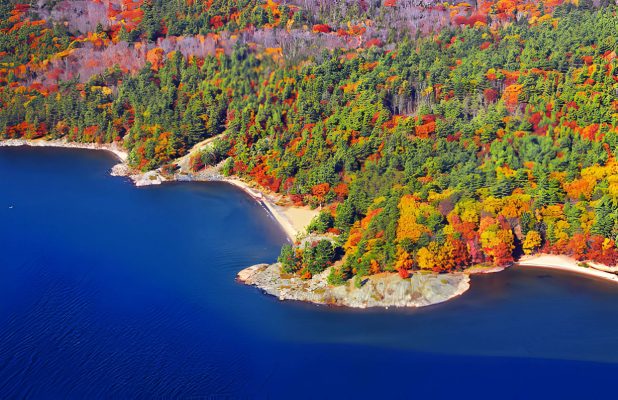
Situated on a point of land extending into Georgian Bay, in proximity to the town of Parry Sound, Killbear Provincial Park is an enjoyable, family-centric park characterized by beaches and stunning rocky shorelines, representative of the Canadian Shield. The park comprises seven campgrounds, and camping is the primary attraction for most visitors.
Children can frolic in the shallow water, while adults relax on the beach, and older kids can explore the six kilometers of trails for hiking or biking. For photographers, the rocky points, windswept pines, and serene sunsets offer ample inspiration.
4. Killarney Provincial Park
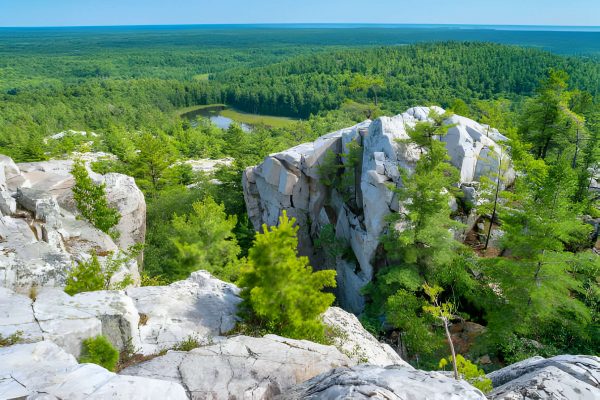
Killarney Provincial Park stands as one of the true gems among Ontario parks. While a bit more remote than destinations like Algonquin, the effort to reach here is well-rewarded. Nestled along the shores of Georgian Bay and encompassing numerous small lakes, Killarney’s landscape distinguishes itself from other Ontario parks, with its signature feature being the La Cloche Mountain Range. Composed of white quartzite, these mountains boast a strikingly white color.
Adding to the allure, and in stark contrast to the green trees, cobalt blue water, and white mountains, are the breathtaking pink granite cliffs that line the shores of some lakes. Many of these sights have been immortalized in paintings by members of The Group of Seven, Canada’s most renowned artists. A.Y. Jackson, a prominent member, played a pivotal role in advocating for the establishment of the park.
The hiking trails in and around Killarney Provincial Park are both spectacular and diverse. Short hikes lead to the shores of Georgian Bay, others to the white peaks of the La Cloche Mountains or dramatic lookouts. For a unique experience, you can take a short boat shuttle and explore George Island on foot. Wildlife abounds, providing ample opportunities to spot bears, foxes, deer, moose, and beavers. This is especially true during morning hikes or if you are camping in the park.
Killarney Provincial Park is conveniently located just outside the charming community of Killarney, approximately a 4.5-hour drive from Toronto or one hour south from Sudbury.
For an unparalleled experience, choose to lodge at the Killarney Mountain Lodge. This rustic lodge, undergoing enhancements for the past couple of years, now seamlessly blends luxury with tradition. The rooms cater to a range of budgets and preferences. Additionally, the lodge offers a seasonal pool and all-inclusive packages.
5. Point Pelee National Park
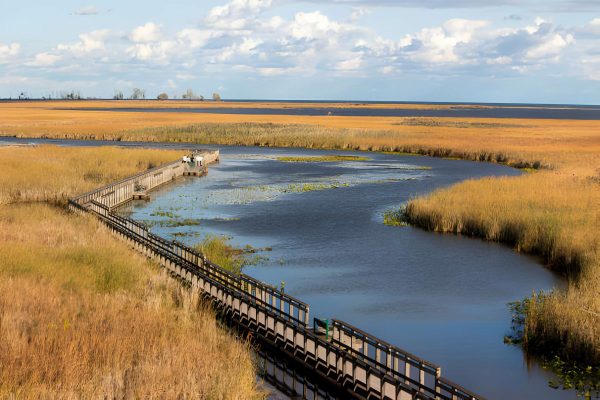
Point Pelee National Park, located at the southernmost point on the Canadian mainland, forms an almost triangular peninsula that extends into Lake Erie. The latitude at this point is equivalent to that of Rome and Northern California. While the shoreline features long stretches of beach, the park’s primary renown comes from being a crucial rest stop along the migratory path of numerous birds.
Recognized as a “Wetland of International Significance” by UNESCO, Point Pelee National Park is a popular destination for bird enthusiasts. Visitors can leisurely traverse the extensive boardwalks winding through marshland, stroll along the beaches, or kayak through the wetlands. The prime times to explore the park are during the spring and fall migration periods. Point Pelee is also notable for the significant influx of Monarch butterflies passing through the area each fall.
The nearest town to the park is Leamington, offering a reasonable selection of hotels. A suitable choice, just five minutes from the park, is the Best Western Plus Leamington Hotel & Conference Center, featuring an indoor pool.
6. Georgian Bay Islands National Park
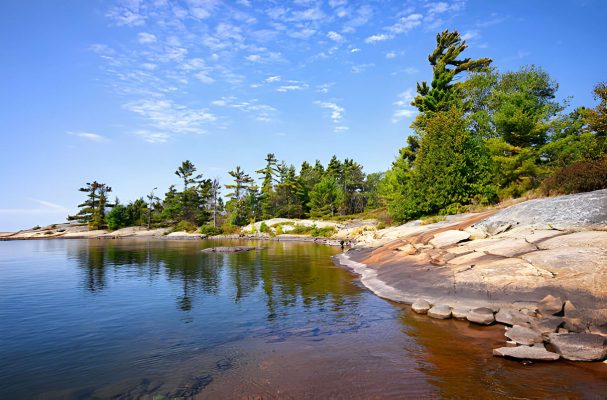
The enchanting islands of Georgian Bay, formed by the Canadian Shield during the last Ice Age, have been a haven for boaters, nature enthusiasts, and artists like Tom Thomson and the “Group of Seven.” In 1929, a total of 59 islands in this archipelago were designated as a national park.
Preserving their pristine state, these islands are accessible only by boat. The park’s DayTripper boat transports visitors to Beausoleil Island, with a quick 15-minute journey each way. On the island, one can engage in activities such as swimming, hiking, biking, or simply relishing a day at the beach. Departing from Honey Harbour, the boat services operate from Victoria Day (late May) to Thanksgiving (mid-October).
7. Quetico Provincial Park
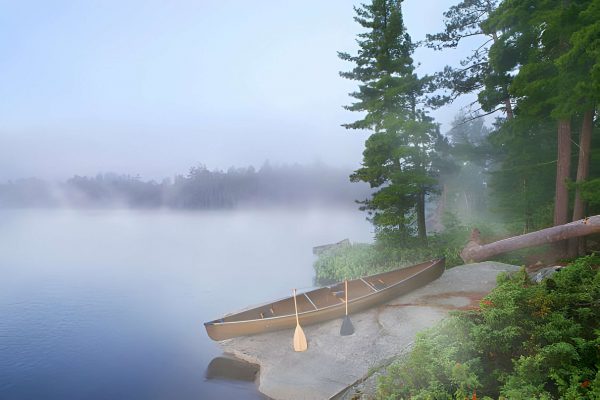
Situated in the distant northwestern region of Ontario, approximately 160 kilometers west of Thunder Bay, Quetico Provincial Park beckons those seeking an extraordinary paddling adventure. The unspoiled lakes and woodlands of Quetico provide a markedly distinct experience from Southern Ontario parks, offering an expansive, untouched wilderness with significantly fewer visitors. Abundant wildlife, superb fishing, and a genuine backcountry atmosphere characterize the park.
Encompassing over 4,500 square kilometers, this area is primarily accessible by boat, float plane, or canoe. While a highway traverses a section of the park, granting access to a campground, it represents only a small fraction of Quetico. The park is part of the Boundary Waters Canoe Area within the Superior National Forest in Minnesota.
Numerous outdoor adventure groups, both from Canada and the United States, embark on multi-day paddling expeditions in the park. For those unfamiliar with the area, it is advisable to undertake such trips with the assistance of a local outfitter to explore available options. Some outfitters even offer fly-in services to remote lakes, serving as starting points for paddling adventures. Most outfitters are situated in or near the town of Atikokan.
8. Wasaga Beach Provincial Park
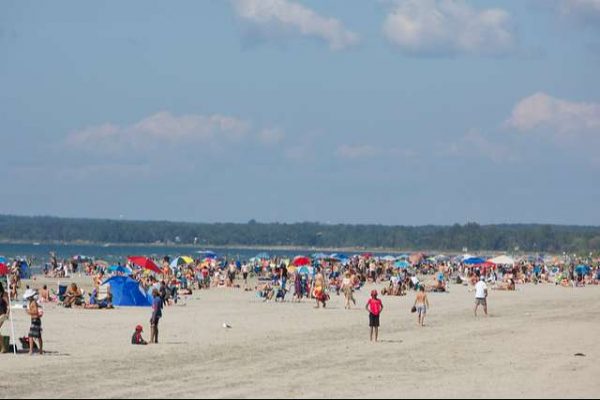
Wasaga Beach Provincial Park boasts a segment of an extraordinary beach officially recognized as the world’s longest freshwater beach. Vast stretches of golden sand await you and your companions.
The choice of access points significantly influences the level of activity during your beach experience. The provincial park boundaries encompass the most pristine beaches, whereas the central area of the town, particularly in front of the boardwalk, offers the liveliest atmosphere and entertainment.
Beyond the beach, the park features winding walking trails through the forest, and the serene Nottawasaga River provides an ideal setting for a tranquil canoe ride. For a touch of history, explore the Nancy Island Historic Site, commemorating a pivotal naval battle during the War of 1812.
9. Sandbanks Provincial Park
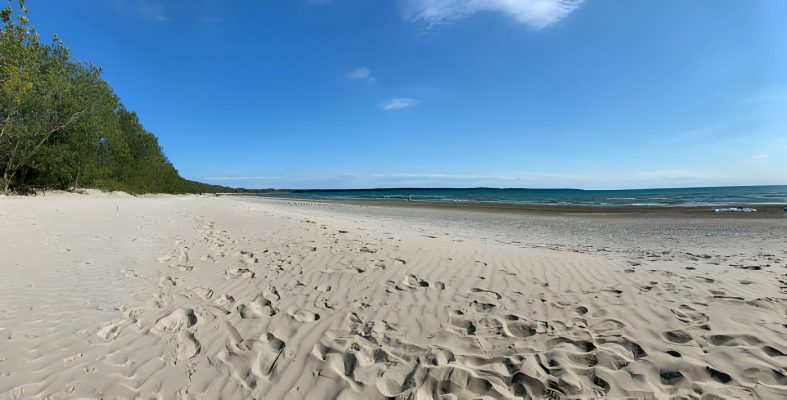
Envision an expansive sand dune seamlessly merging into the crystal-clear blue waters, and that’s precisely what awaits you at Sandbanks. Located just a few hours’ drive east of Toronto, Sandbanks Provincial Park serves as an ideal summer getaway, offering beaches, picnic areas, and camping facilities.
In addition to the sand dunes gracefully meeting the lake, two additional beaches stretch along the shores of Lake Ontario, featuring level terrain and shallow waters—an ideal setting for families with young children.
Beyond the shoreline, the park offers six hiking trails that provide opportunities for exercise and the potential to spot wildlife. The wooded areas adjacent to the beach also serve as a prime location to expand your birdwatching checklist.
10. Sibbald Point Provincial Park
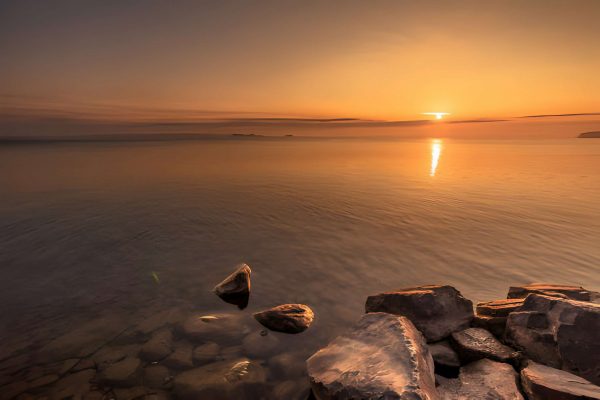
Situated just under an hour’s drive from the city of Toronto, Sibbald Point stands as one of the nearest Provincial Parks with a prime waterfront location on Lake Simcoe. This park offers everything needed for an enjoyable family weekend in nature, all without the inconvenience of a lengthy drive.
The expansive, sandy beach along the shores of Lake Simcoe features a designated swimming area, and during the summer, the water warms delightfully, making it an ideal spot for leisurely wading in the shallows.
Away from the water, vast green spaces and lawns provide an excellent setting for activities such as soccer or a game of Frisbee. In this same area, amenities like washrooms, picnic tables, and barbecues are also available.
For those planning an extended stay, consider packing your camping gear. With over 600 campsites spread across 10 different campgrounds, Sibbald Point ensures that you have a good chance of securing a site even on the busiest summer weekends.
11. French River Provincial Park
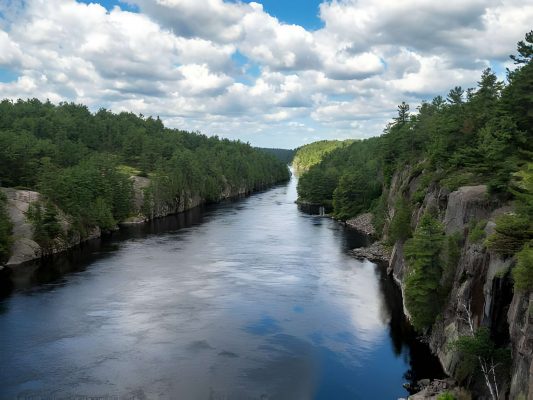
Covering an expanse along the French River extending to Georgian Bay, French River Provincial Park comprises predominantly backcountry terrain accessible primarily by boat or canoe. Renowned as a favored destination for canoeing and kayaking enthusiasts, the park is an excellent choice for a weekend canoe trip, featuring campsites scattered along the riverbanks and on the islands in Georgian Bay.
This picturesque river, spanning 112 kilometers and forming a waterway between Lake Nipissing and Georgian Bay, is conveniently located about an hour’s drive south of Sudbury or three hours north of Toronto. An impressive visitor’s center off Highway 69 offers panoramic views of a section of the river, complemented by a nearby pedestrian bridge that spans the water.
Steeped in history, the French River saw the navigation of French “Voyageurs” and notable figures like Samuel de Champlain as early as 1620. Presently, the river remains a popular destination for canoeists, anglers, and outdoor enthusiasts. Numerous fishing and recreational resorts dot the riverbanks, some accessible only by boat or floatplane, offering comprehensive packages for fishing, kayaking, or canoeing adventures.
12. Petroglyphs Provincial Park
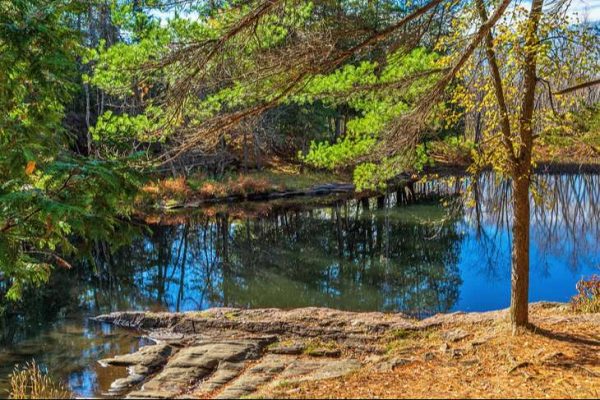
Located northeast of Peterborough, Petroglyphs Provincial Park boasts the largest collection of indigenous rock carvings in Canada, featuring approximately 900 carvings that date back between 500 and 1000 years.
To safeguard the carvings from the elements, the rocks housing these ancient depictions are encased in a protective glass enclosure. This concentration of carvings within a confined area ensures ease of viewing. Visitors have the opportunity to explore not only this enclosure but also the visitor center, which is rich in information about the intricate drawings.
13. Pinery Provincial Park
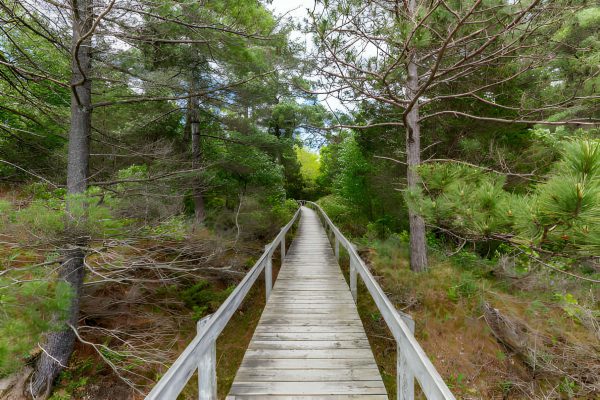
Pinery Provincial Park, a cherished destination for summer vacationers for many years, remains one of the top parks on Lake Huron. The expansive 10-kilometer beach is embraced by warm, shallow waters, providing an ideal setting to unwind on a beautiful July afternoon with loved ones.
Nestled among the pines, a spacious campground offers a variety of sites, including both electrical and non-electrical options. When not enjoying the beach or indulging in fireside marshmallow roasting, you might want to explore one of the 10 walking trails or embark on a 14-kilometer bike ride.
FAQs
Q: Are these parks suitable for families with children?
A: Absolutely! Many of Ontario’s parks, including High Park and Pinery Provincial Park, have family-friendly activities and amenities.
Q: Can I visit these parks year-round?
A: While most parks are open year-round, the best time to visit may vary. The article provides insights into the ideal seasons for each park.
Q: Are there accommodations within the parks?
A: Yes, several parks offer camping facilities, cabins, or nearby accommodations. Planning ahead is key for a comfortable stay.
Q: What makes conservation parks different from provincial and national parks?
A: Conservation parks primarily focus on preserving natural habitats and biodiversity while providing recreational opportunities.
Q: Are there any entrance fees for these parks?
A: Some parks may have entrance fees, and details are available on official park websites. It’s advisable to check in advance.

